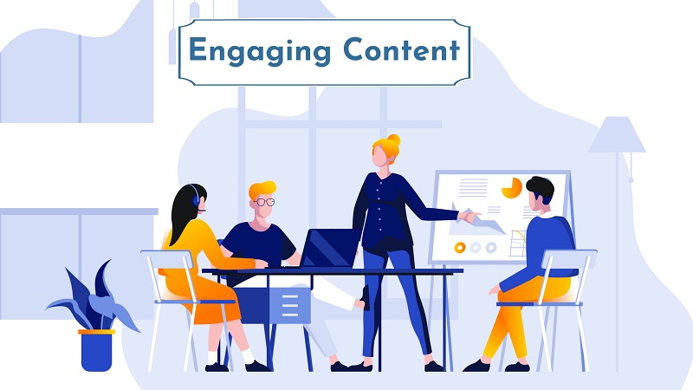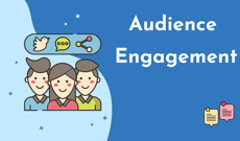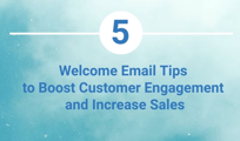In the past few years, producing content for the web has taken on a whole new dimension. Bloggers and content creators are going the extra mile, adding various elements to keep visitors glued to their websites. While the internet is overflowing with content of every kind, we're all trying to add that special touch to stand out from the competition and win over our specific crowd.
But let's be real, setting a goal to be creative and engaging is a surefire way to run low on inspiration. If you're a content creator, you've probably been there. Whether you're writing a new post, working on your hundredth video, or designing a website, there's always that moment when you feel like you've hit a creativity wall.
Let's break through it today! We've gathered a bunch of ideas on how to make engaging content and which techniques are used to engage a reader. Channel your inner Carrie Bradshaw, Steve Jobs, or Banksy, take some insights from this post and rev up your content, so it'll be impossible for viewers to just scroll on by.
What is Engaging Content
Engagement is crucial for successful digital marketing and communication—it sets your brand apart and turns casual visitors into loyal followers. Engaging content is a good mix of text and other elements that not only informs but also encourages a connection, stirs emotions, and drives action. It's the online equivalent of a friendly, thought-provoking conversation that keeps you hooked.
But how can you figure out if your content is really resonating with your audience? Let's add some KPIs to the mix: here's what marketers had to say about engaging content:
- Engaging content generates twice as many conversions compared to plain content, and five times more page views.
- 88% of marketers admit that engaging content makes them stand out from competition.
- 60% of marketers state that video marketing helped them achieve their engagement goals.
If your content is rocking those metrics, you can definitely call it engaging:
🎯Time Spent on Page and Bounce Rate. The longer visitors stick around, the more they're into your content. A low bounce rate means they're exploring your site further.
🎯Click-Through Rate and Conversion Rate. CTR and CR measure how well your content inspires action, like clicking, signing up, or making a purchase.
🎯Social Shares and Comments. Readers share your work if they find it valuable. Active discussions and comments signal that you're building a community and sparking dialog.
Now, let's shift from the basics to practical tips for creating engaging content.
How to Create Engaging Content: Key Principles
If you strive to make content more engaging, you can zoom in on specific elements or enhance it as a whole. Let's explore the options.
1. The Power of Storytelling
Storytelling is the art of using narratives to convey ideas and emotions. It involves crafting and sharing stories that grip the audience's focus and connect on a personal level. Telling your brand story is a powerful technique for communication, as it can make content experiences more relatable and emotionally resonant, and as a result, nudge viewers to take desired actions.
Storytelling is already widely used in various forms of media, including literature, film, marketing, and everyday conversations. So it's not a new tool in your box, but the options are broader now. The latest forms cover live streaming, 360-degree videos, virtual reality (VR), and more.
2. The Visual Component
Visual content is what makes the digital world go round. Engaging content isn't just what is written; it's also about how it's presented. Incorporating infographics, animations, visual storyboards, video clips, and other multimedia elements boosts the interactivity of your content. In turn, interactive content fosters higher engagement and a more personal connection, resulting in a 28% increase in share rates and referral traffic, compared to just 3% without it.

For example, regular PDFs, even with fancy pictures, are too static to engage today's readers. That's why many content creators choose to transform their PDF catalogs, presentations, reports, newsletters, and other types of content into interactive flipbooks. With FlippingBook, users can jazz up their documents with an authentic page-flip effect and interactive elements, such as GIFs, videos, pop-up images, and more. This makes PDFs live and breathe, mesmerizes the audience, and increases your sales. Check out this example from our customer, packed with catchy visuals:
The Christie NHS Trust Annual Review
3. Relevance Prioritized
Staying relevant is the name of the game. Engaging content is all about understanding and feeling your readers.
Knowing your audience well is key—it helps you pick the right channels, the most appropriate tone of voice, visuals, and interactives that'll definitely win interest. If you miss the mark, all your hard work and cutting-edge instruments won't mean much.
Are you ready to go deeper into each of these approaches now? Let's study some engaging content examples to understand them better.
Engage with Storytelling
Storytelling has evolved from traditional campfire tales to immersive online narratives. Whether you're creating content for a blog, website, social media, or email campaigns, compelling stories work great for captivating your audience. Let's discover the best ways to engage readers with storytelling.
#1 Timeless Techniques
The fundamentals of storytelling still work. You can rely on them in the digital context.
1. Gripping Headline or Introduction. These opening lines should be concise, snappy, and relevant to the reader's interests.
2. Problem and Resolution. Digital stories can include these elements even if they are not traditional narratives. For example, in a blog post, you can introduce a problem (conflict) and provide solutions (resolution). This keeps readers engaged and offers value. Besides, resolution often comes in the form of a call to action (CTA). A well-crafted CTA guides the reader or viewer to the next step, such as making a purchase, signing up for a newsletter, or sharing content.
In FlippingBook, you can add a CTA button to the upper right corner of your flipbook or create a CTA from the PDF content by adding an outbound link. Including a lead form in the final part of the flipbook can also be a great resolution.
This flipbook features a 'Visit Our Website' CTA button:
3. Suspense. Use suspense to keep the audience eagerly anticipating what happens next. You can do this by throwing in cliffhangers, unexpected twists, or by gradually revealing the key information. Digital media, such as web series, interactive websites, or social media stories, are great platforms for creating suspense through serialized content.
#2 Welcome the New
Storytelling is constantly developing, so why not keep pace with it? Some of the newer and more effective methods for content creators include:
1. Interactive Storytelling: Content that allows users to make choices and navigate different paths within the narrative. Examples are interactive video content, choose-your-own-adventure style stories, and even social media polls.
For example, in their 2023 Halloween campaign, M&M's offers customers to personalize chocolates, create unique sharable designs, and make custom gifts in a fun and playful setting:
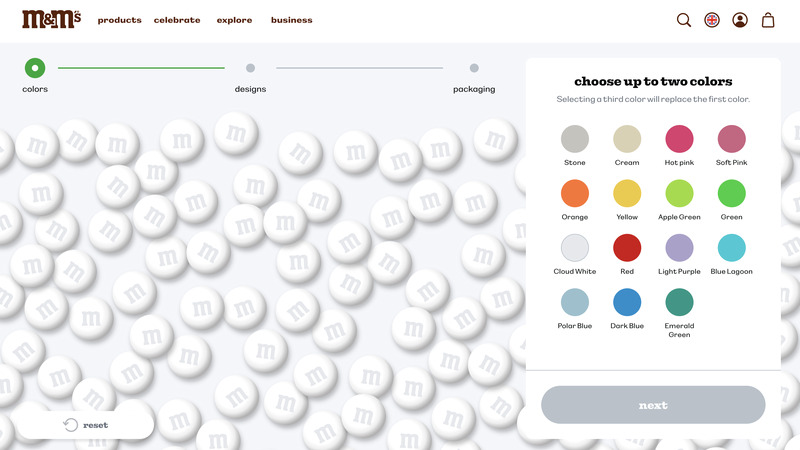
2. Live Streaming: Platforms like Facebook Live, Instagram Live, and Twitch have turned live streaming into a mighty storytelling tool. Content creators can communicate with their audience in real time, telling stories as they unfold. If you're wondering how to create engaging social media content, that's definitely a method to try.
3. 360-Degree Videos and Virtual Reality (VR): These tech wonders drop viewers right into the heart of the action, making them part of the story. Creators can use 360-degree videos and VR to transport the audience to different locations and scenarios, or present products and services in the most absorbing way. Check out this skydiving vid to grasp the idea:
4. Augmented reality (AR): Over the past few years, we've seen the rise of AR, and with the imminent launch of Apple Vision Pro glasses, we're stoked about the fresh creative possibilities that AR content is about to unlock. And it has already changed our lives a lot! See how AR helps customers figure out if the furniture's size and style fit them well:
.jpg)
5. Micro-Storytelling: Brief, concise narratives often told through platforms like Instagram Stories, TikTok, or Twitter. These stories are perfect for today's audiences with their short attention spans. And if you're looking to streamline production, you can leverage AI in marketing to create different versions, shorter and longer ones, from the same content piece.
6. User-Generated Content (UGC): Any kind of content produced by users or consumers. Encouraging UGC is a powerful way to build community and emotional bonds. It includes social media posts, reviews, Wikis, fan art, challenges and hashtags, and many other things. Here's an Instagram post with a customer review on yoga practice:
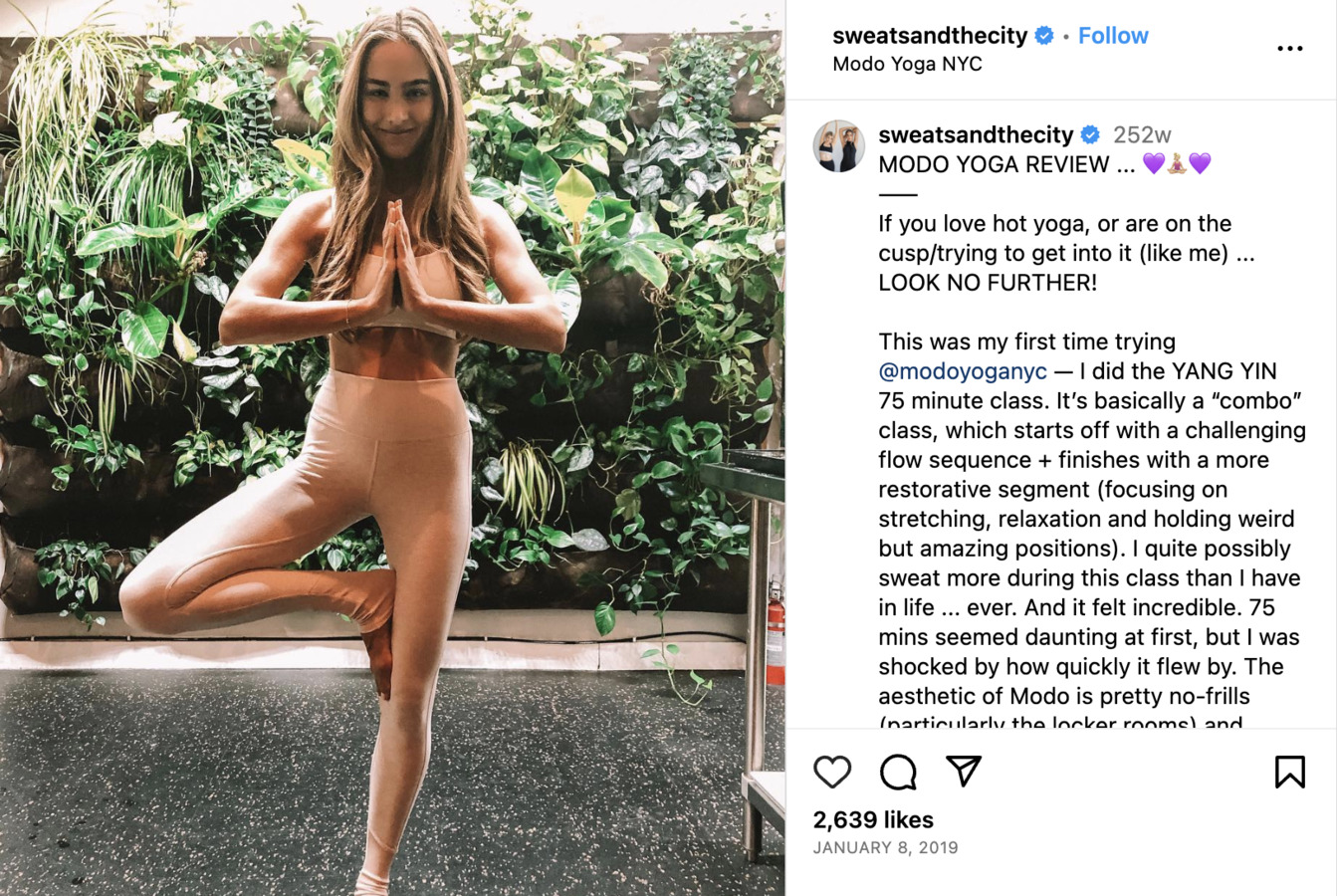
7. Podcasts: The audio format has made a comeback, offering content creators a platform to share in-depth stories, interviews, and discussions.
8. Memes: These viral bits of content have a knack for tugging at our heartstrings. Grab the ‘Turn around' meme template with a green screen and craft a video that brings smiles to your audience!
You can see that storytelling has expanded far beyond just writing, and this brings us to the next set of tips.
Focus on Visuals: More Multimedia, More Interactivity
Interactive visuals bring about special appeal and offer an entirely new dimension for communicating with your audience. Multimedia engages multiple senses simultaneously, making anything more memorable and impactful.
With e-tools like FlippingBook, you don't have to be a design guru to create engaging up-to-date content. You can quickly add interactive elements to your regular visuals and illuminate them, as easy as a breeze.
#1 Showcase with Videos
Videos are a simple tool to show real-life scenarios, provide demonstrations, or take your audience on a journey. Whether it's an immersive tour of a product, an expert interview, or an animated explainer, videos grab attention and keep viewers engaged.
Check out this university's postgraduate prospectus to catch some ideas on incorporating videos into your content:
Swansea University Postgraduate Prospectus
#2 Use Catchy Images
Images break up the text, making your content more scannable and visually appealing. Whether it's high-quality photographs, illustrations, or infographics, they all breathe life into your content.
FlippingBook users love adding pop-up images and galleries. When clicked by readers, these images open in a pop-up window. They offer an engaging way to include extra information, see pictures in detail, and show your products and services at their best.
#3 Add GIF animations
GIFs are not about overwhelming your message with constant motion. These short, looping animations work like visual exclamation marks, highlighting important details and holding your audience's attention in a way that static images just can't match. Here's what you can do with GIFs:
- Animate numbers to emphasize changes and growth.
- Make diagrams and infographics people will want to study.
- Create a GIF from several product pictures to showcase products from different angles.
- Add mini GIFs to liven up initial caps, punctuation marks, or any other text and picture elements of your doc.
Flip through this report to see great examples of using GIFs:
#4 Add Forms and Quizzes
Adding forms and quizzes across the pages of your flipbooks allows you to keep your readers more engaged, get valuable insights, and connect with your audience on a deeper level. Here's how you can use polls and quizzes to enhance your content:
- Add surveys to your promo brochures to learn what your customers think about your new products or services.
- Embed contact or order forms in your catalogs or newsletters to generate leads, let your clients order products, and make it easier for your readers to contact you from your document.
- Fillable forms and quizzes are also great for crafting compelling interactive coursebooks and workbooks for your students. Add a test at the end of each chapter to check how your students are doing, or integrate a quiz to help them learn new material in a fun and engaging way.
#5 Integrate Links
Interactive elements like clickable items and hyperlinks invite your audience to get involved in the content. This maintains their interest and lets them explore at their own pace. For instance, a digital magazine with external links can guide readers to related articles, products, or more info, keeping them engaged. Check out these inspiring PDF examples for more ideas.
Basically, all these multimedia transform your content from a passive reading experience into an active exploration. Just keep in mind that it's not about overwhelming your content with visuals. It's about elevating the storyline, simplifying complex details, and involving your audience in ways that plain text can't.
Understand Your Audience
Imagine you're a DJ, and you're about to perform at a party. Your music collection may be incredible, but if you don't know the crowd's music taste, you'll struggle to keep the dance floor grooving. In content creation, the same principle holds: without knowing your audience's preferences, even the best content can fall flat.
#1 Analyze and Conquer
Understanding your audience goes beyond assumptions and anticipations. Let's explore how various platforms assess their audiences and use the gathered data to create engaging content.
1. Music Streaming Platform
By tracking user data and preferences, a music streaming platform like Spotify or Deezer tailors playlists and music recommendations. If a user listens to rock music frequently, the platform detects a preference for this genre and customizes the content accordingly. The result? A personalized experience that keeps the user coming back for more.
Luckily, you can now measure metrics for practically any type of medium or content—from PDF tracking to social media stats—and easily apply the same approach to your use case.

From Mike Warner's article on LinkedIN
2. E-commerce Giant
In e-commerce, knowing the preferences of your audience can amplify your earnings. Imagine a major online store analyzing its customers' buying behavior. If they spot a trend in eco-friendly product purchases, they can strategically highlight these items, creating a dedicated section for environmentally conscious shoppers. Actually, that's what Amazon once did.
3. Social Media Platform
Social media platforms are data goldmines. You don't even need extra software for analytics; the built-in data tells a lot. By analyzing how users interact, social media can spot trends and preferences. For example, you might be familiar with Facebook Insights. If a page administrator sees that video posts get way more likes and longer views than text or image posts, they can start focusing on sharing more videos to keep the audience engaged.
4. Educational Platform
The same applies to educational content. For instance, Khan Academy continually analyzes data on how students interact with their content. They've discovered that short video lessons tend to be more effective. This insight has driven them to focus on creating and promoting concise video content like this:
With over 8.1 million subscribers on YouTube, it's clear that their strategy works just fine.
5. Content Marketing Agency
Marketing agencies monitor tons of metrics to identify its top-performing content—or even conduct a comprehensive market analysis to stay on top of upcoming trends. For example, if an "Effective Email Marketing Strategies" blog post on HubSpot receives more views and shares compared to their regular articles, it highlights audience preferences, prompting the agency to create more similar content.
6. News Media Outlet
By keeping an eye on the most-read articles, news media platforms learn which topics strike a chord with their readers. This knowledge helps shape their future content and editorial decisions, ensuring they not only get what their audience likes but also deliver it. For example, the New York Times is known for its data-driven approach to content. It analyzes readers' interactions with its online articles to determine popular topics, trends, and preferred content formats.
7. Email Marketing Service
An email marketing platform like Mailchimp or Omnisend leverages analytics to pinpoint its most effective campaigns. If, for instance, a series of product announcement emails consistently achieves higher open and click-through rates, the platform recognizes the audience's interests and can tailor future email content accordingly.
8. Flipbook Platform
Flipbook platforms usually get customers fully equipped with valuable insights into their audience's behavior. With FlippingBook analytics, you can uncover the most captivating pages of your document, gauge your crowd's interest, identify the most valuable links, analyze performance over specific time periods, and more.
#2 Choose the Perfect Timing
In the digital arena, where information abounds, selecting the right timing for your content is another key to creating engaging content. Every audience has its own unique rhythm when it comes to their online behavior. For instance:
☕The Morning Larks: Some individuals are early risers and are most active in the morning. They might check their emails, social media, or news updates while sipping their morning coffee.
👨🏽💼The 9-To-5 Brigade: Many working professionals are busiest during standard office hours. They may have limited time for non-work-related online activities during the day.
🦉The Night Owls: On the other hand, night owls thrive in the late hours. They're more likely to engage with content in the evening or even late at night.
😌The Weekend Explorers: Weekends often provide more leisure time for people to explore online content, particularly on Saturday mornings or Sunday afternoons.
To optimize timing, align your content with your audience's behavior:
- Use analytics to identify peak activity times on your website, social media, and email.
- Experiment by sending emails at different times and posting social media updates on various days.
- Consider geographic variations in time zones and use tools for scheduled content delivery.
- Tailor content formats to suit different moments. Offer long blog posts during leisure hours and engaging videos during lunch breaks.
Boost Your Creative Juices
Being a content creator is both rewarding and demanding. To craft engaging content, you need to stay inspired and keep your creativity flowing. As a small parting gift in this article, we're giving you a flipbook filled with tips to rekindle or amp up your creative thinking.
Remember, creativity is a journey, and there's no one-size-fits-all approach. Experiment with these tips, adapt them to your unique style, and keep producing content that shines.
In Conclusion
Creating engaging content is both an art and a science, crucial for successful digital marketing. It transforms visitors into loyal followers. Understanding your audience's preferences and leveraging multimedia adds depth and engagement to your content. Posting it when your audience is most active is also vital for maximum impact.
To create engaging content, connect with your audience through compelling text, immersive multimedia, and a deep understanding of their preferences, building lasting connections.

